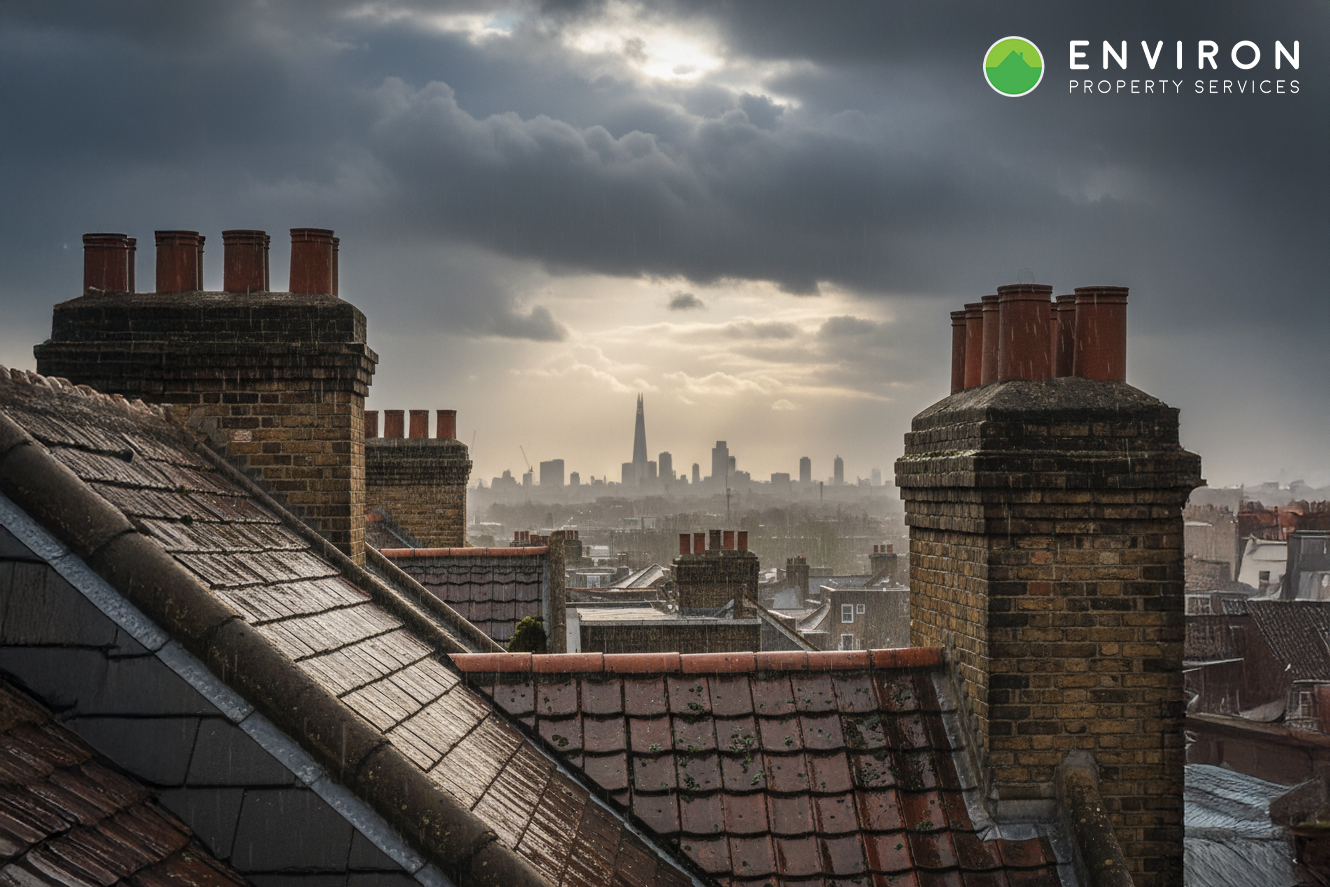- About Us
- Services
- Blog
- Contact
Need a quote?
Living in London means dealing with a climate that’s as unpredictable as it is varied. From sudden downpours to prolonged damp spells, high winds, and occasional frost, the weather in the capital has a major impact on the condition of your roof.
Over time, even small weather-related stresses can build up, leading to damage that requires professional roof repairs. Understanding how London’s climate affects your roof can help you stay prepared and prevent costly repairs down the line.




London is no stranger to rainfall, and while roofs are designed to shed water, constant exposure can still take a toll. Persistent damp can weaken roofing materials, especially older tiles or worn flat roofing membranes.
Moisture can seep into cracks or gaps in flashing, eventually causing leaks inside the property. Once water makes its way inside, it can damage insulation, ceilings, and internal walls, leading to expensive repairs.
Strong winds are common throughout the year. These winds don’t just blow debris onto your roof, they can actually lift and shift tiles, especially if they’re already loose or worn. Once a single tile moves, the surrounding ones become more vulnerable, increasing the risk of water ingress. Chimneys, gutters, and flashing are also prone to wind damage that can quickly lead to you calling an emergency roofing company.
Although London doesn’t experience extreme winters, the freeze-thaw cycle can still cause significant wear.
When water gets into tiny cracks in roofing materials and freezes, it expands. This expansion forces the crack to widen, gradually weakening tiles and mortar. Even a few seasons of this process can create leaks or cause visible deterioration.
London’s urban environment contributes to faster wear on roofing materials. Pollution can break down surfaces over time, while the moisture-rich climate encourages moss and algae growth. Moss holds water against the roof, preventing it from drying properly and leading to decay and tile displacement.
Regular maintenance and inspections are key. Checking for loose tiles, clearing gutters, and addressing small repairs quickly can significantly extend your roof’s lifespan. Professional roofing assessments ensure potential problems are identified early and addressed before they become major issues.
London weather might be unavoidable, but roof damage doesn’t have to be. With proactive care and expert support, your roof can stay strong and resilient, no matter what the forecast brings.
It depends on the construction, but the minimum weight a flat roof must be capable of bearing is 300lbs. This refers to a concentrated weight where a load is positioned on just one area of the roof. So, for example, a commercial flat roof can approximately support a 300lb HVAC unit in a 2.5×2.5ft single space.
Over time, damaged or unmaintained roofs can become entry points for pests such as birds, squirrels, or insects. These intruders can cause further damage, contaminate insulation, and even create fire hazards by nesting near electrical components.
If your roof is over 20 years old, shows visible signs of damage, or has caused recurring issues indoors, it’s time to consult a professional roofer. They can assess the roof’s condition, identify hidden dangers, and advise whether repairs or full replacement are necessary.
Ignoring the risks of an ageing roof can lead to expensive repairs and even compromise your safety.
Regular roof inspections, timely maintenance, and professional assessments ensure your home remains secure, energy-efficient, and free from the hidden hazards that old roofs often conceal.


